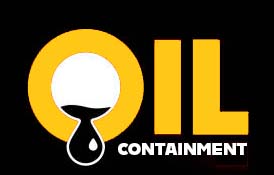In the oil industry, the proper containment of potentially hazardous materials is crucial to ensuring the safety of workers, the environment, and surrounding communities. Secondary containment is a key aspect of any oil production operation, as it provides an additional layer of protection in the event of a spill or leak. To effectively create containment barriers in the oil industry, researchers should consider using durable materials such as polyurea and follow best practices for installation and maintenance.
Understanding the Importance of Containment Barriers
Containment barriers serve as a safeguard against the release of oil and other harmful substances into the environment. In the event of a spill or leak, these barriers help to contain the material and prevent it from spreading to nearby water sources, soil, or wildlife habitats. By implementing effective containment measures, oil companies can minimize the impact of accidents and maintain compliance with environmental regulations.
Choosing the Right Material: Polyurea
Polyurea is a versatile material that is commonly used in the oil industry for secondary containment applications. Known for its strength, flexibility, and chemical resistance, polyurea is well-suited for creating durable containment barriers that can withstand harsh environmental conditions. When applied properly, polyurea forms a seamless, impermeable membrane that effectively contains hazardous materials and prevents leaks.
Best Practices for Installing Containment Barriers
When installing containment barriers in the oil industry, researchers should follow these best practices to ensure their effectiveness:
-
Proper Planning: Before installing a containment barrier, it is essential to conduct a thorough site assessment to identify potential risks and determine the best placement for the barrier. Consider factors such as terrain, drainage patterns, and proximity to sensitive areas.
-
Surface Preparation: Ensure that the surface where the containment barrier will be installed is clean, dry, and free of debris. Proper surface preparation is critical for ensuring the adhesion and longevity of the barrier.
-
Application Technique: When applying polyurea or other containment materials, follow the manufacturer’s guidelines for mixing, priming, and spraying. Proper application techniques are essential for achieving a seamless, uniform coating that provides effective containment.
-
Quality Control: Regularly inspect and maintain containment barriers to ensure their integrity and functionality. Address any issues such as cracks, tears, or deterioration promptly to prevent leaks and contamination.
Conclusion
Creating effective containment barriers in the oil industry requires careful planning, proper material selection, and adherence to best practices for installation and maintenance. By using durable materials such as polyurea and following industry guidelines, researchers can help to minimize the risk of spills and protect the environment. By prioritizing containment measures, oil companies can demonstrate their commitment to safety, compliance, and environmental stewardship.
